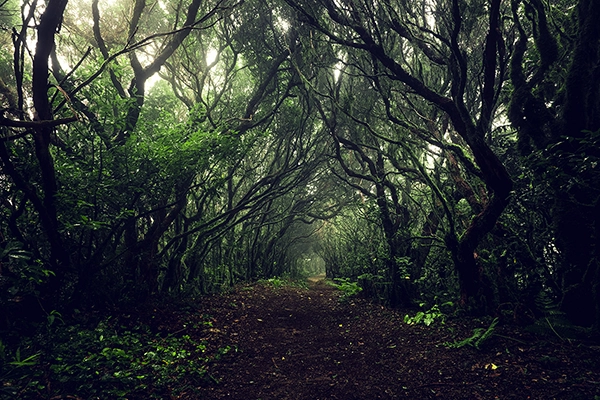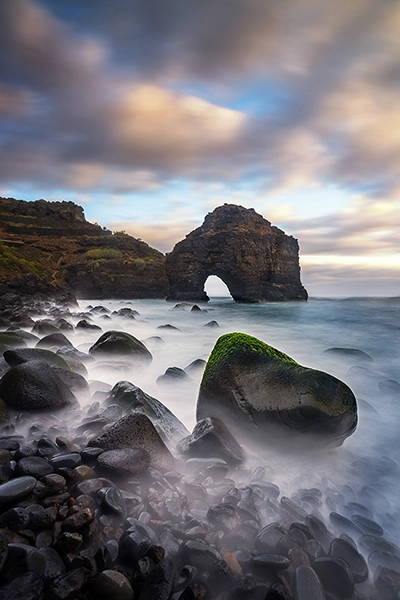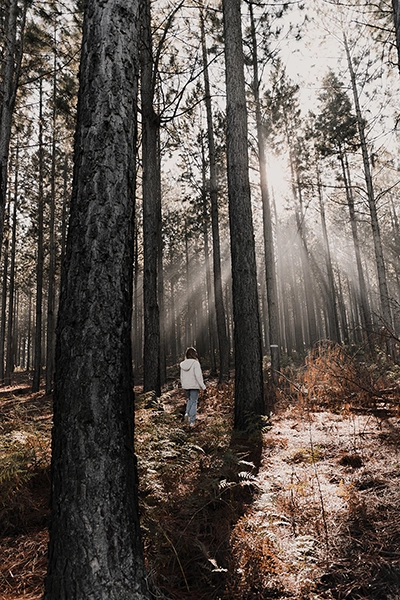Tamron Blogs
More Photo Tips | Video Gallery | Photo Gallery | Enewsletter sign-up
Mastering the Art of Leading Lines

Click image to view larger
In photography, composition is a paramount element that can transform a simple snapshot into a compelling story. One such compositional technique that has stood the test of time is the use of leading lines. Lines in an image guide the viewer's eyes to a focal point. This helps lead them through the picture and creates depth and perspective.
Whether you're an experienced photographer or just starting out, knowing how to use lines can make your photos stand out. This article discusses leading lines in nature photography. It also explains how to create captivating beginnings for your photo stories.
Make a photo more impactful.
Leading lines in a photograph guide the viewer's eyes from the front to the back or towards a focal point in the image. They can make a flat image feel more immersive by adding perspective and depth.
They can be found in both man-made and natural environments, such as roads, fences, rivers, and tree branches.
Bold lines in a photo can create the illusion of movement. This can give the picture a sense of energy and liveliness. The lines can make it appear as though objects are in motion or moving in a specific direction. This technique adds dynamism to the image.
The psychology behind leading lines.
We naturally focus our eyes on lines and patterns. Leading lines are a simple and effective way to direct the viewer's gaze in an image.
By placing these lines in certain spots in your picture, you can subtly direct your viewer's focus to the important parts. This technique is excellent for storytelling and conveying emotions as it leads the viewer through the visual narrative. Nature Leading Lines Photography
In nature photography, leading lines are found in the natural patterns and shapes of the surroundings. They add a layer of depth and intrigue to landscapes, seascapes, and even close-up shots of natural elements.
Types of leading lines.

Click image to view larger
There are various types of leading lines that you can utilize in your compositions:
• Straight Lines: Convey a sense of order and direct the viewer's gaze in a straightforward manner.
• Curved Lines: Add a sense of movement and can lead the eye on a journey through the frame.
• Diagonal Lines: Imply action and dynamism, as they create a sense of depth and three-dimensionality.
• Converging Lines: Happen when two or more lines meet at a point far away, making things look more 3D.
Leading lines photography examples.

Click image to view larger
• Railroad tracks receding into the distance
• A winding path leading through a forest
• Rows of buildings or trees converging towards a vanishing point
• A staircase or escalator leading upwards or downwards
• Shorelines or rivers leading towards the horizon
• Bridges, fences, or roads leading towards a distant landmark
Finding leading lines in nature.
To find leading lines in your scene, examine the elements in your frame. Identify any natural or man-made lines that guide the viewer's eye towards a specific point of interest. Here are some steps to help you find leading lines in your scene:
To master leading lines in nature photography, start by observing your surroundings. Look for natural formations such as paths, rivers, waves, tree branches, or even shadows that can serve as leading lines. Notice how these lines work with the rest of the scene and guide the viewer's focus towards your subject.
Consider the following tips when composing your shots:
1. Survey the scene: Take a moment to look around you. Find any important features or objects. Look for things like roads, paths, fences, railings, bridges, tree branches, or any other linear elements that draw the eye.
2. Consider perspective: Pay attention to the angles and perspectives from which you can capture your scene. Sometimes, a slight change in your vantage point can reveal leading lines that weren't initially apparent. Move around the scene and explore different viewpoints to find the most compelling composition.
3. Look for convergence: Leading lines often converge towards a vanishing point in the distance. Scan the scene for any lines or objects that appear to converge or converge towards a common point on the horizon. This convergence adds depth and dimension to your composition.
4. Subject Placement: Position your main subject at the end of the leading lines or where lines intersect to create a strong focal point.
5. Observe patterns and shapes: Leading lines don't always have to be straight. Look for patterns, curves, or geometric shapes that can act as implied lines within your frame. These can include repeating elements like arches, rows of objects, or waves in water.
6. Experiment with framing: Once you've identified potential leading lines, experiment with different framing and compositions to incorporate them effectively into your image. Consider how the lines in the scene interact with other elements. They help direct the viewer's gaze towards the main subject or focal point.
7. Adjust your camera settings when taking a picture: This includes changing the aperture, shutter speed, and ISO. Doing so will help you achieve the desired brightness and focus in your photos. To maximize depth of field and keep the entire scene in focus, try using a smaller aperture (higher f-stop number).

Click image to view larger
Techniques for the use of leading lines.
• Contrast and Color: Use contrast or color to make the starting point of your leading lines stand out.
• Texture and Pattern: Incorporate texture or repeating patterns to add visual interest and depth right from the beginning.
• Layering: Place elements along the leading lines to create layers and complexity in the image.

Click image to view larger
Examples of leading lines in action.
Let's look at some examples to better understand how to use leading lines effectively.
The Winding River
A classic example of leading lines in nature photography is a river winding through a landscape. The bends in the river can provide a picturesque view of a distant mountain or a setting sun. This creates a beautiful and interesting scene.
The Forest Path
A path cutting through a dense forest is another excellent example. The path's edges and the hanging branches create lines that lead the viewer's eye to a focal point. This focal point can be a clearing or a solitary tree. This adds an element of mystery and adventure to the picture.

Click image to view larger
The Rocky Shoreline
In seascapes, the rough edges of a rocky shoreline can direct the viewer's eyes towards the horizon. They can also lead to a striking element in the seascape, such as a lighthouse or cliff. This creates a focal point and enhances the overall impact of the composition.

Click image to view larger
Best Practices for Using Leading Lines
While leading lines can be highly effective, there are best practices to consider:
• Balance and Composition
Ensure that your leading lines enhance the composition rather than overpower it. Balance is key—leading lines should complement the main subject and other elements in the frame.
• Clarity and Direction
Make sure the lines are clear and the direction they guide the eye is intentional. Ambiguous lines can confuse the viewer and dilute the impact of your image.
• Subtlety and Nuance
Sometimes, the most powerful leading lines are the ones that are not immediately obvious. Use subtlety to create a nuanced and sophisticated composition that reveals itself over time.
Best lenses for photography with leading lines.

Click image to view larger
When choosing a lens for taking photos with leading lines, consider factors like the scene, perspective, and artistic vision.
Many people enjoy using wide angle lenses for taking photos with leading lines. This is because these lenses can make the perspective appear larger and add depth to the photo.
A wide angle lens allows you to capture more of the scene and emphasize converging lines. You can achieve this with lenses like a 24mm prime lens or a wide angle zoom lens. This leads to more impactful compositions.
Conclusion.
Mastering leading lines in photography composition can significantly improve the visual impact of your images. By incorporating leading lines into your nature photography, you create pathways that lead the viewer's attention and imagination.
To improve your landscape and nature photography, learn how to use leading lines in your pictures. Mastering the use of leading lines can take your photos to the next level. So, grab your camera and let the lines lead the way to your next great shot.
More Photo Tips | Watch Videos | Learn More About Tamron Lenses | Photo Gallery